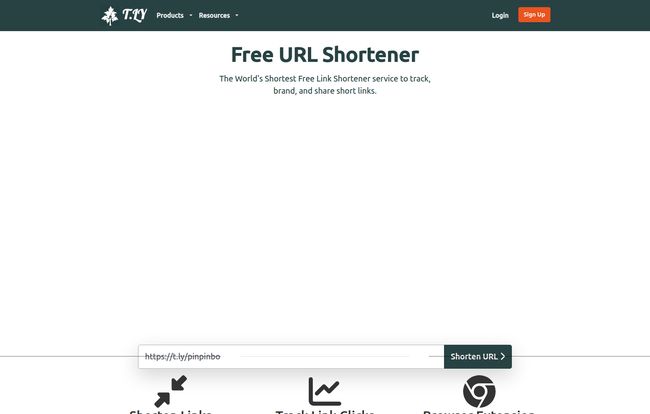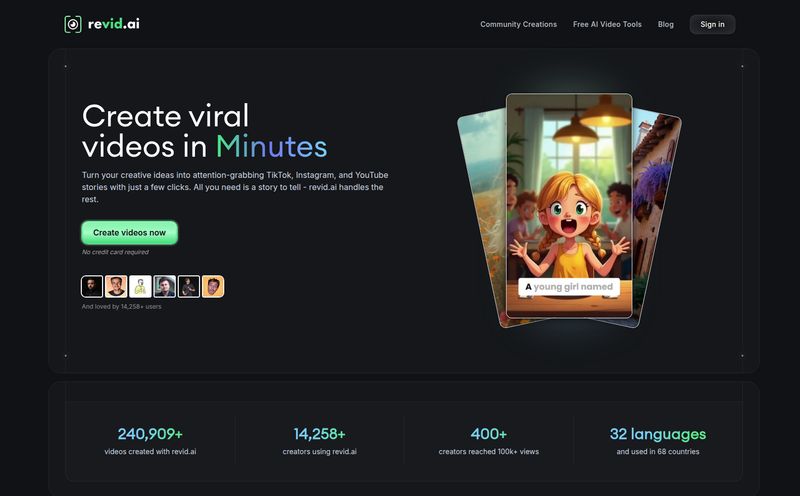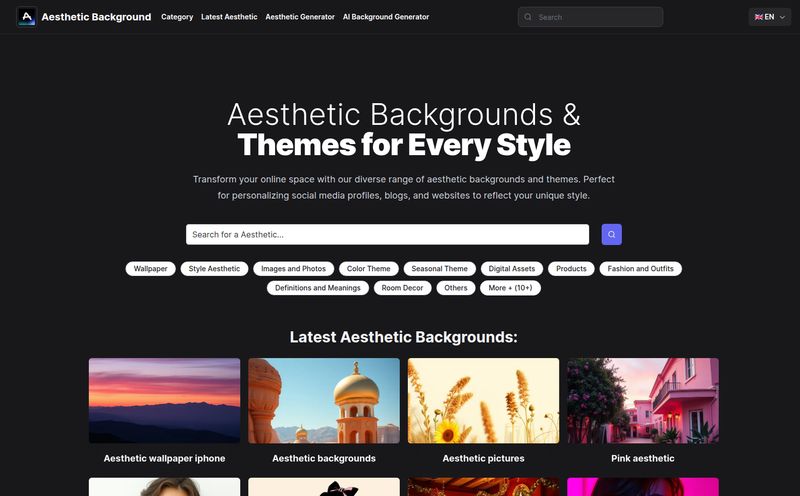Remember the early days of Twitter? When you had to perform digital gymnastics to fit a coherent thought AND a link the length of a CVS receipt into just 140 characters. It was a wild time. We all got pretty familiar with tools like TinyURL and, of course, the big one, Bitly. Then Google even threw its hat in the ring for a while with goo.gl (RIP).
Fast forward to today, and the internet is a different beast. Character counts are more generous, but the need for clean, trackable links hasn't gone away. If anything, it’s become even more critical. A raw, messy URL is like showing up to a client meeting in your pajamas—it just sends the wrong message. It’s cluttered, untrustworthy, and frankly, a bit lazy.
So, I'm always on the lookout for tools that can make my digital life, and my clients' campaigns, a little bit tidier. Which is what led me to take a closer look at T.ly. It boldly calls itself “The World’s Shortest, Free Link Shortener.” A pretty big claim. So, does it live up to the hype? Let’s get into it.

Visit Modifyla
First Off, What Even is T.ly?
At its core, T.ly is a URL shortener. You give it a long, unwieldy link, and it spits out a short, snappy one. Simple. But digging just a tiny bit deeper, you see it's more than just a link squisher. It’s a platform designed for tracking, branding, and sharing those links effectively. You paste your long URL, hit the button, and get a neat `t.ly/` link. It’s a two-second process that instantly makes your content look more professional.
And I noticed when I first visited their site, it hit me with a quick Cloudflare security check. Some might see that as an extra step, but for me, it's a good sign. It means they're taking security and bot prevention seriously, which is a green flag for any service I’m going to be routing my traffic through.
Why You Should Still Care About Shortening URLs
Some people might argue that in an age of embedded links and social media platforms automatically shortening links in posts, these tools are obsolete. I couldn't disagree more. The value isn’t just in the shortening anymore; it’s in the control and the data.
The Underappreciated Power of Branded Links
Think about it. Which of these would you rather click on?
your-favorite-brand.com/products/new-fall-collection/item-id-987234-?utm_source=twitter&utm_medium=post&utm_campaign=fall_launch_2024bit.ly/3xY7zPqt.ly/BrandLaunch
The first one is a UTM-riddled mess. The second one, while short, is anonymous and could lead anywhere. It screams “mystery meat” link. But the third one? It’s clean, it’s branded (even with the t.ly domain), and it’s trustworthy. T.ly lets you create these custom aliases, and if you're on a paid plan, you can even connect your own custom domain for ultimate brand cohesion (like `yourbrand.co/launch`). In my experience, a branded short link can significantly boost click-through rates because it builds trust before the user even clicks.
Data is Everything and Tracking is Non-Negotiable
This is the big one for me as an SEO and paid ads guy. If you aren't tracking your clicks, you're flying blind. T.ly provides analytics on every link you create. You can see how many people clicked, but more importantly, where they came from. It gives you breakdowns by geographic location, the browser they used, and their operating system.
I had a situation last year with a small e-commerce client. We were pushing a new product line on social media. By using T.ly's analytics, we noticed an unexpectedly high number of clicks coming from Austin, Texas—a city we weren't actively targeting. We quickly spun up a small, geo-targeted ad campaign for the Austin area, and boom, conversions from that region jumped almost 20%. That's actionable intelligence you simply can’t get from a raw URL.
A Tour of T.ly's Best Features
Okay, let's get into the nuts and bolts of the platform. I've been playing around with it for a bit, and here’s what stands out.
The Simplicity of the Shortening Process
It's dead simple. You land on the homepage, and the input box is right there. There's no fluff. Paste, click, copy. I appreciate a tool that respects my time and doesn't make me jump through hoops for its primary function. They also have a browser extension with over 450,000 users, which is a testament to its convenience. With one click from any webpage, you can generate a short link without ever leaving the page. Its a workflow dream.
The Rise of the QR Code
Remember when QR codes were a gimmick? Well, the pandemic changed that. Now, they're everywhere—on restaurant menus, event posters, business cards, product packaging. T.ly has a built-in QR code generator for every short link. This is fantastic because it bridges the gap between your physical and digital marketing efforts. And because the QR code is tied to a trackable T.ly link, you can actually measure the engagement from your physical marketing materials. Brilliant.
API Access for the Tech-Savvy
Looking at their blog, I was pleasantly surprised to see posts about their API packages for Node.js, Laravel, and Go. This tells me T.ly isn't just for casual users or marketers. They're catering to developers who want to integrate custom link shortening directly into their applications. This is a sign of a mature and robust platform, not just a simple web tool.
So, What's the Catch? A Look at T.ly's Pricing
The big headline is "Free," and their free plan is actually quite generous. You get a good number of links and clicks per month, which is more than enough for most individuals or small projects. But of course, they have to keep the lights on. They operate on a freemium model, which is pretty standard.
Here’s a quick look at how their plans generally break down (it's best to check their site for the most current numbers):
| Plan | Price | Good For |
|---|---|---|
| Free | $0 | Casual users, small personal projects. Offers basic tracking and a decent link allowance. |
| Premium | Around $5/month | Power users, freelancers, and small businesses needing more links, more clicks, and custom domains. |
| Business & Enterprise | Starts at $25/month+ | Larger teams and companies that need advanced features like team collaboration, detailed analytics, and high-volume link creation. |
Honestly, the pricing seems very fair, especially the entry-level premium plan. The ability to add your own custom domain for five bucks a month is a steal for small businesses looking to up their branding game.
The Good, The Bad, and The Honest Take
So, what’s the final verdict? Overall, I'm really impressed.
The pros are clear: it's incredibly fast and easy to use, the free tier is very capable, the click tracking provides genuinely useful data, and the integrated QR codes are a huge plus. It does the simple things perfectly and offers a clear path to more powerful features for those who need them.
As for the cons? It's hard to find major faults. The UI is very minimalist, which I like, but some might find it a bit basic compared to more complex dashboards from competitors. And, naturally, the most powerful features—like connecting multiple custom domains or deep analytics—are reserved for the paid tiers. But that's not really a con, its just a business model.
Frequently Asked Questions About T.ly
Is T.ly safe and legit?
Yes, T.ly is a legitimate and safe service. They have a large user base and use Cloudflare for security, which helps protect against malicious activity and ensures uptime. As with any URL shortener, the safety of a specific link depends on where it leads, but the service itself is secure.
Can I use my own domain with T.ly?
You can! This feature, often called branded domains or vanity URLs, is available on their paid plans. It allows you to replace the 't.ly' part of the link with your own domain (e.g., `my.brand/special-offer`), which is excellent for brand consistency and trust.
How does T.ly make money if it's free?
T.ly uses a 'freemium' model. The core service is free for everyone, but they offer premium subscription plans for businesses and power users who need more features, a higher volume of links and clicks, and advanced options like custom domains and detailed analytics.
Are T.ly links permanent?
Generally, yes. Links created with reputable URL shorteners like T.ly are intended to be permanent and not expire. As long as the service is operational, your links should continue to work. For mission-critical links, using a branded domain offers an extra layer of future-proofing.
Is T.ly better than Bitly?
"Better" is subjective and depends on your needs. T.ly competes very strongly on simplicity and price. Some users prefer T.ly for its straightforward interface and more generous free/low-cost plans. Bitly is a more established player with a very extensive feature set at their higher tiers, but can be more expensive. I'd recommend trying T.ly's free plan to see if it fits your workflow.
Final Thoughts on T.ly
So, is T.ly the best free URL shortener out there? For a huge number of users, I think the answer is yes. It nails the fundamentals, provides real, tangible value through its tracking features, and doesn't get in your way. It's a sharp, efficient tool in a digital world that's often filled with bloat.
Whether you're a marketer trying to track campaign performance, a small business owner looking to create branded links on a budget, or just someone who wants to clean up their social media posts, T.ly is a fantastic option. It's earned a spot in my digital toolkit, and I'd definitely suggest giving it a try. After all, it's free to start.



